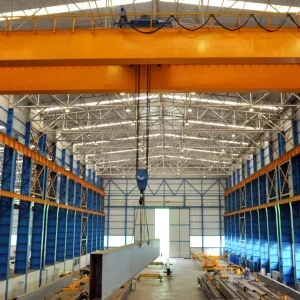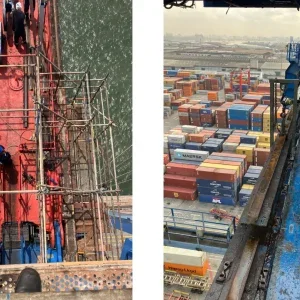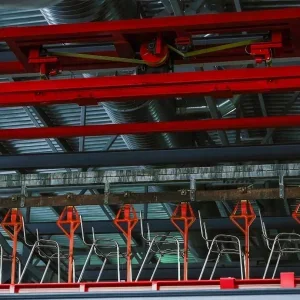In its standard lifting segment, which includes industrial cranes, wire rope hoists, chain hoists, light crane systems, load manipulators and a variety of components, with lifting capacities ranging from 100kg to 100t, sales were up 5.8% to €178.2m, operating profit was down 20.5% to €21.3m, orders received dropped 40.3% to €132.6m and the order book declined 17% to €281m.
The heavy lifting segment, which covers EOT cranes for process industries, shipyard cranes, shipboard gantry cranes, grab unloaders, STS cranes, RTG and RMG cranes, straddle carriers, reachstackers, top lifters, empty container handlers, forklift trucks, YardIT crane automation, container positioning systems, crane control systemss and heavy-duty crane components, with lifting capacities ranging from 50t up to 2,000t, saw sales down 3.4% to €129.7m, operating profit up 29.3% to €10m, the value of orders received down 36.9% to €133.8m and the order book down 11.8% to €420.3m.
Services, which include inspections, preventive maintenance programmes, repairs and improvements, on-call services, spare parts, modernisations, operational services and consultation, saw sales up 2.2% to €169.7m, operating profit down 15.5% to €18.8m, orders received down 19.6% to €125.6m and the order book down 10.4% to €109.1m.
As a whole, this saw Konecranes report sales up 0.7% to €442.1m, operating profit down 18.1% to €36.8m, net profit down 24.1% to €25.3m, orders received down 34.3% to €369.7m and its order book value as of 31 March down 12.9% to €792m.
President and CEO Pekka Lundmark said lower business volumes at its customers is impacting its results, although he pinpoints a number of opportunities for the company.
“Weak production figures in manufacturing and process industries, as well as lower container throughput in harbours and terminals caused a significant decline in capital expenditure in most of our customer segments,” Lundmark said. “Also the service business is affected since low capacity utilisation reduces the need for maintenance and spare parts. This means that our existing service customers are now buying less than usual.
“However, there is also an opposite trend visible in the downturn. We are now in discussions with several new potential customers about quite large service outsourcing deals, triggered by customers’ need to save money and lift productivity. This trend is expected to strengthen in the coming months, but unfortunately it cannot in the short term compensate for the lost volume from existing customers. Our main strategy in service continues to be to grow our contract base. This investment will bring returns in the years to come.
“The new equipment market is currently very weak, and it may continue that way still some time. There is, however, one exception: power generation. Especially cranes and services for the nuclear power industry represent a significant potential for us. At the moment, 150 to 160 new nuclear reactors are expected to be built in the world between the years 2008 and 2020, each of them representing a large market for lifting equipment. On top of this comes the services potential.
“With our crane technology and global service presence, we are now well positioned to take advantage of this opportunity. As a summary, we are facing a tough year, and there is currently no market recovery in sight. While we are balancing our capacity and cost base with the lower demand, we want to take care of our competencies so that we are able to benefit from the above and other opportunities once the market recovers.”






